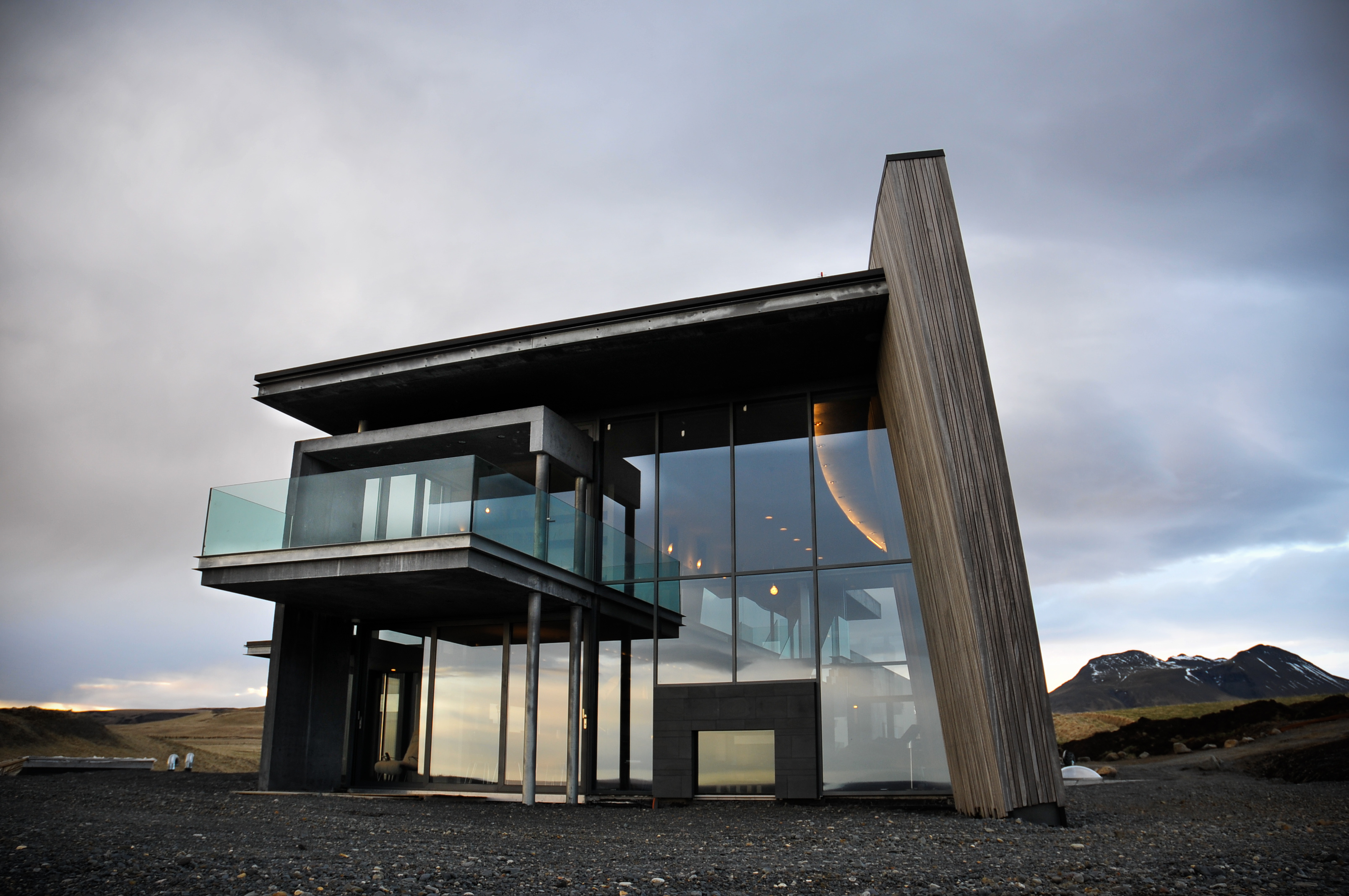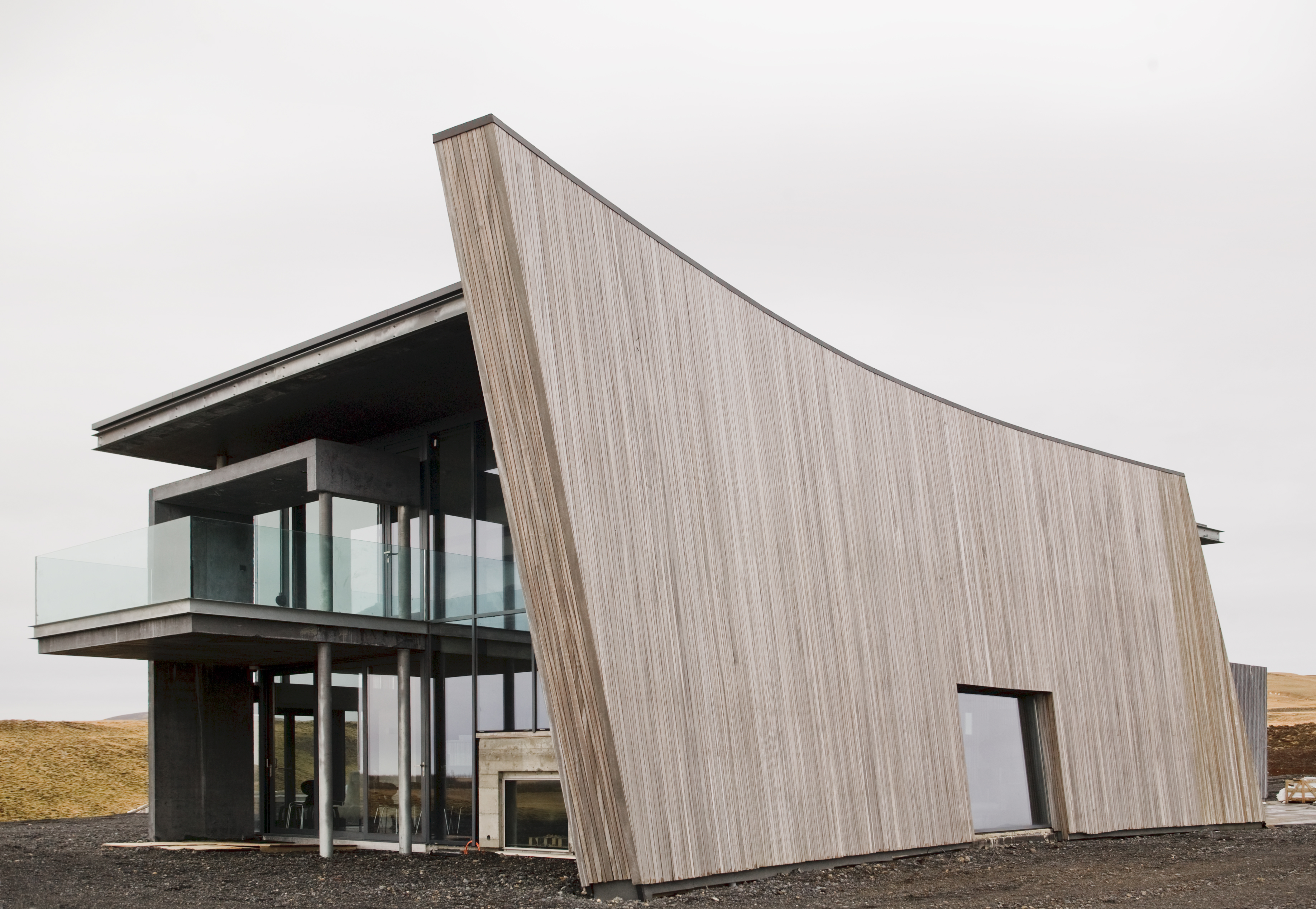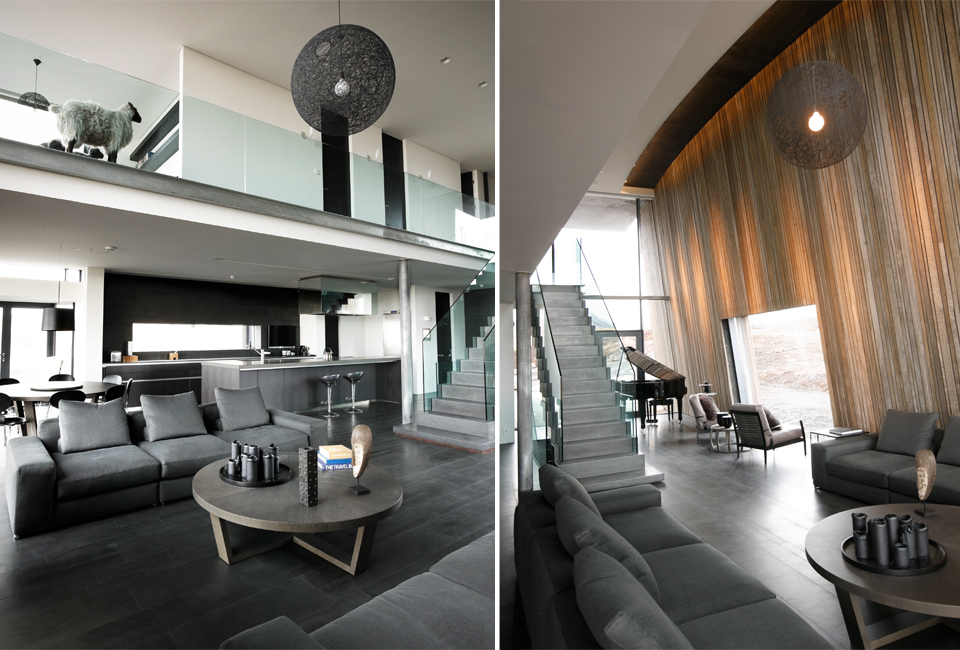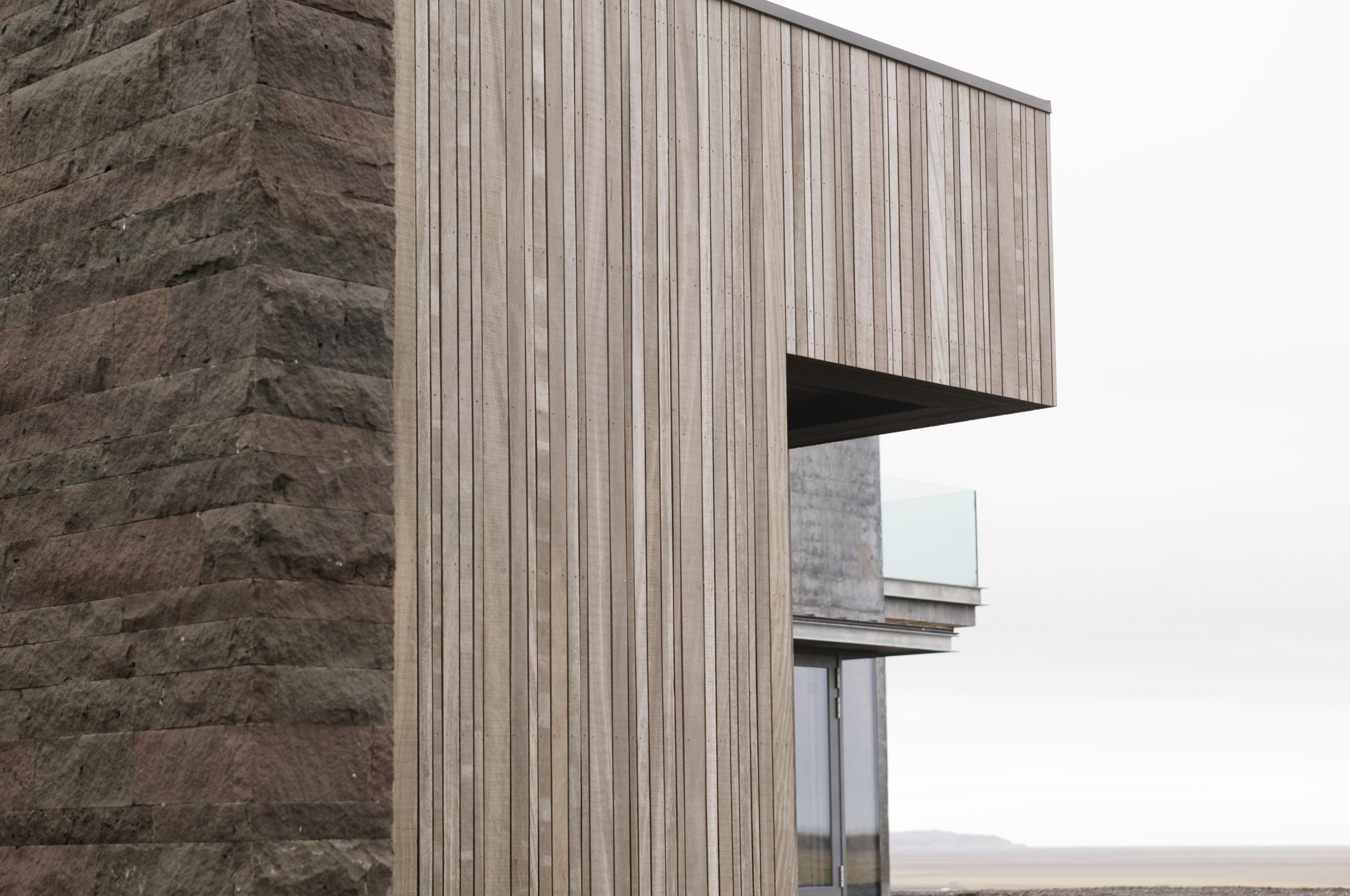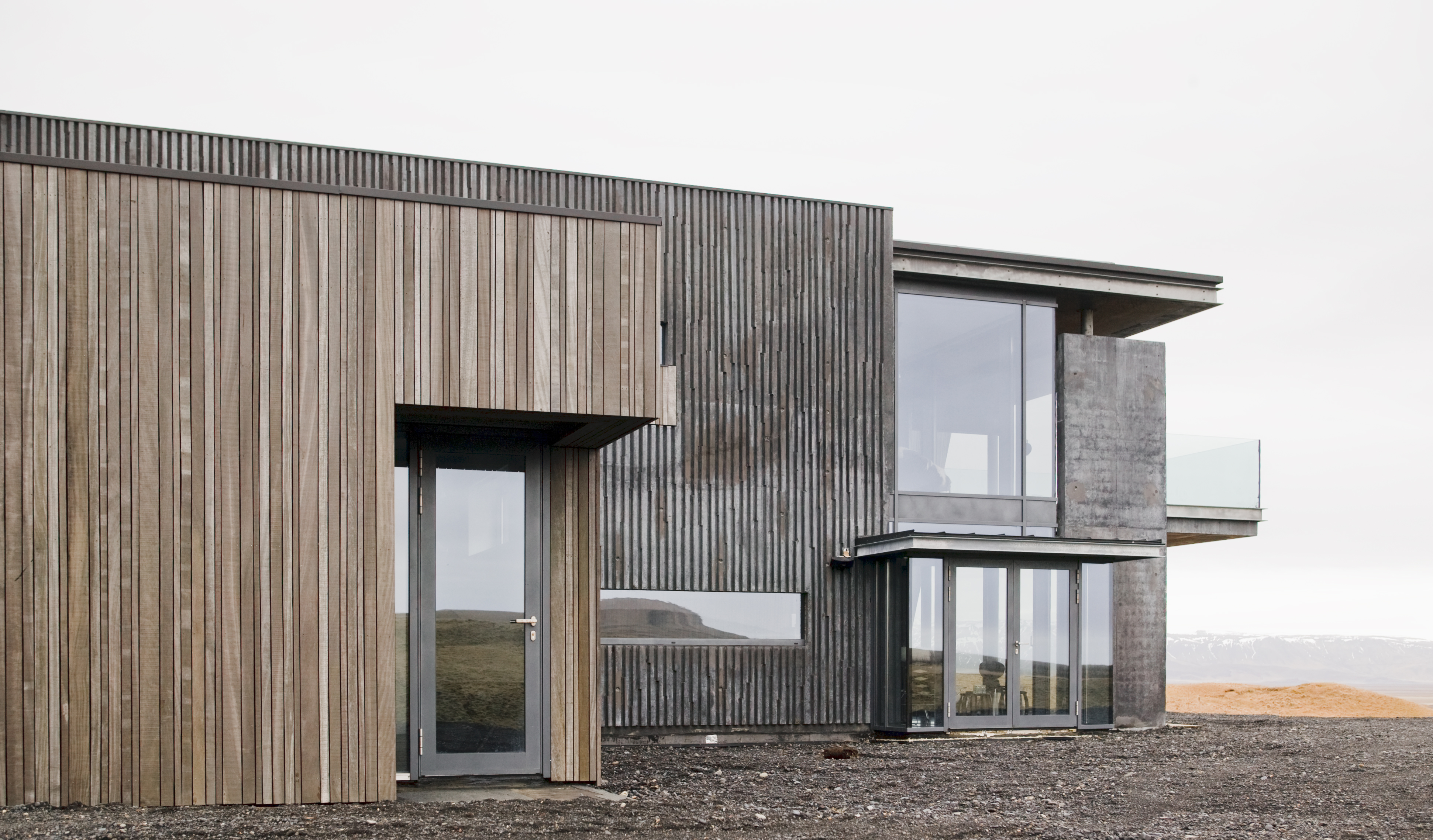The concept of Casa G is based on reading and feedback to the landscape it exists on. The characteristic landscape situation and view differences distinctively in each direction. Towards south the view to the sea and islands, towards north the characteristic triangular mountain, towards east the glacier and towards west the river and canyon.
Those elements are the creator of the project, the transitions between the landscape views giving the entrance from the north and the curved plan giving a vitalized focus towards the seaside in south. When turning back the north view towards the mountain is as well enhanced with the widening view due to the fan-shape of the tilting wooden wall, being a mediator between the northern and southern landscape characteristic.
The tilting is an answer and an interpretation of the glacier towards east, they are communicating and the only and huge window in that wall is creating "a painting" of the glacier experienced from the interior. The guest-wing of the building stretches to the canyon and the river towards west. Thus the building concept is a composition and dialogue of views and experiences of the various natures at site.
The House is constructed with in-situ concrete using special designed mouldings with pattern that derives from an interpretation of a special landscape feature in few Icelandic mountains.
This particular feature or structure of the mountain is called “Studlaberg” and is strangely enough associated with hexagonal pattern. The “Stuðlaberg” was the inspiration to the concrete mouldings.The wooden wall is in Zebra wood and was prepreparated outdoor in order to obtain the same weathered finish inside as outside. When the process during a year was sufficiently completed the wood aging/grayish-process was stopped with impregnation treatment. The boards are carved in different dimensions in order to create variety in the façade.
The ground floor and basement is covered with the Icelandic “Blágrýti” (bluestone) which is dark greyish-blue with minimal pattern and structure. When mounted without gaps in varity in lengths and deapths it gives a homogenic and neutral exclusive floor. Blágrýti is also used as wallcovering in particular places. The 1.st. floor is covered with broad pre-treated Oak boards.
As often the staircase is a particularly important and sculptural element. In this case the architect felt the need of correspondance between the main floor and the staircase. The stair is actually constructed with steel frame and covered completely at all sides with the icelandic Bluestone. The stones junctions are all in 45° in order to obtain the massivity and homogeneus sculpture giving the impression that the stair was carved out of the mountain in 1 whole piece.
To emphasize this it was of utmost importance to have the glacing in one piece as well. Colors are kept in neutral tones and mostly inspired by the colors in the Icelandic nature.
